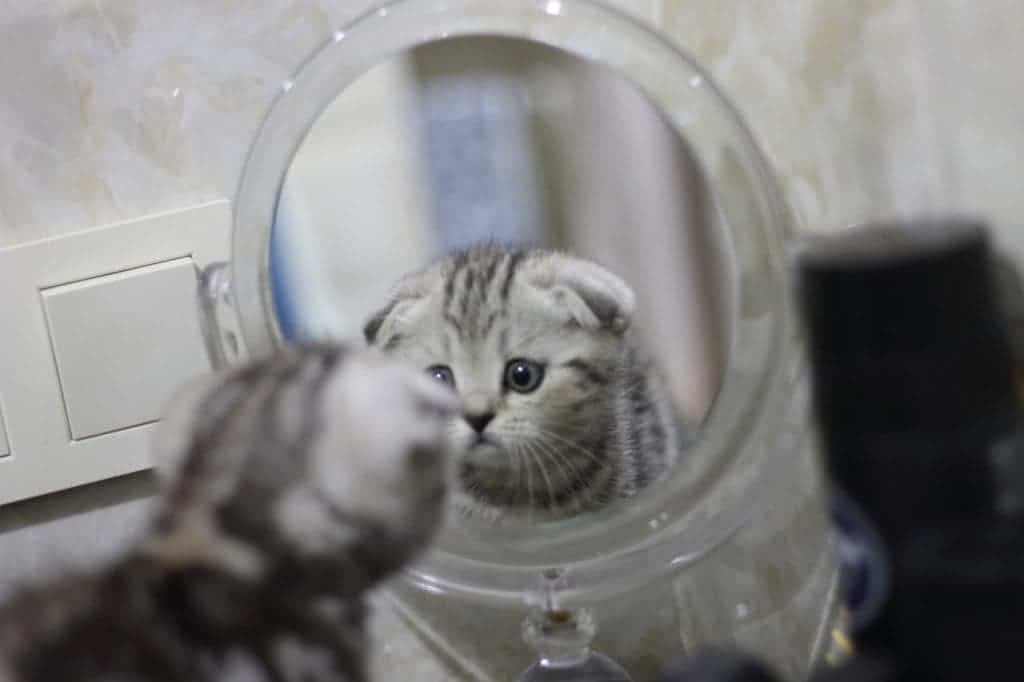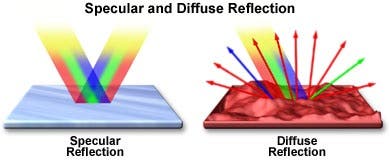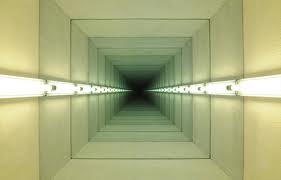
When looking into a mirror, you can see yourself or the mirror’s surroundings in the reflection. But what is a mirror’s true color? It’s an intriguing question for sure since answering it requires us to delve into some fascinating optical physics.
If you answered ‘silver’ or ‘no color’ you’re wrong. The real color of a mirror is white with a faint green tint.
The discussion itself is more nuanced, though. After all, a t-shirt can also be white with a green tint but that doesn’t mean you can use it in a makeup kit.
The many faces of reflected light
We perceive the contour and color of objects due to light bouncing off them that hits our retina. The brain then reconstructs information from the retina — in the form of electrical signals — into an image, allowing us to see.
Objects are initially hit by white light, which is basically colorless daylight. This contains all the wavelengths of the visible spectrum at equal intensity. Some of these wavelengths are absorbed, while others are reflected. So it is these reflected visible-spectrum wavelengths that we ultimately perceive as color.
When an object absorbs all visible lengths we perceive it as black while an object that reflects all visible wavelengths will appear white to our eyes. In practice, there is no object that absorbs or reflects 100% of incoming light — this is important when discerning the true color of a mirror.
Why isn’t a mirror plain white?
Not all reflections are the same. The reflection of light and other forms of electromagnetic radiation can be categorized into two distinct types of reflection. Specular reflection is light reflected from a smooth surface at a definite angle, whereas diffuse reflection is produced by rough surfaces that reflect light in all directions.
A simple example of both types using water is to observe a pool of water. When the water is calm, incident light is reflected in an orderly manner thereby producing a clear image of the scenery surrounding the pool. But if the water is disturbed by a rock, waves disrupt the reflection by scattering the reflected light in all directions, erasing the image of the scenery.
Mirrors employ specular reflection. When visible white light hits the surface of a mirror at an incident angle, it is reflected back into space at a reflected angle that is equal to the incident angle. The light that hits a mirror is not separated into its component colors because it is not being “bent” or refracted, so all wavelengths are being reflected at equal angles. The result is an image of the source of light. But because the order of light particles (photons) is reversed by the reflection process, the product is a mirror image.
However, mirrors aren’t perfectly white because the material they’re made from is imperfect itself. Modern mirrors are made by silvering, or spraying a thin layer of silver or aluminum onto the back of a sheet of glass. The silica glass substrate reflects a bit more green light than other wavelengths, giving the reflected mirror image a greenish hue.
This greenish tint is imperceptible but it is truly there. You can see it in action by placing two perfectly aligned mirrors facing each other so the reflected light constantly bounces off each other. This phenomenon is known as a “mirror tunnel” or “infinity mirror.” According to a study performed by physicists in 2004, “the color of objects becomes darker and greener the deeper we look into the mirror tunnel.” The physicists found that mirrors are biased at wavelengths between 495 and 570 nanometers, which corresponds to green.
So, in reality, mirrors are actually white with a tiny tint of green.





